Ever since my first visit to Rügen some years ago, the island of Hiddensee, located off Rügen’s western coast, has fascinated me. Road signs show how to get to the ferry, and yet cars are not allowed on the island. I had read about how cracks have been appearing for years on the island, and I also knew that in the days of the GDR the island was a resort that was used by musicians and artists, where they could be away from the main part of the country and the Stasi could still keep a close eye on them. The island’s name even turns up in a song from 1974 called “Du hast den Farbfilm vergessen”.
But with so much else to see on Rügen itself, somehow in my first few visits I never made it to Hiddensee. So when I received an invitation from Kurdirektor Alfred Langemeyer and the Reederei Hiddensee to visit the island before attending a preview of the Störtebeker Festspiele, the chance was too good to miss.
Getting to Hiddensee
Whilst there is a connection to the island by ferry from Stralsund on the mainland, the shortest trip is from Schaprode on Rügen. Depending on the time of year there are up to 16 crossings to Hiddensee’s three ports, although in the winter only one may be open if there is ice in the channel. It is theoretically possible to drive down to the harbour in Schaprode, but parking there is limited and mainly short-stay anyway. On the main road entering the town there is a sign to a large car park off to the left, from where a shuttle service goes down to the harbour, or it is possible to walk the short distance. Tickets for the ferry can be purchased at an office on the quay side, the office will also charge for the Kurtax which is levied from tourists.
The crossing takes between 30 and 45 minutes, depending on which harbour on Hiddensee you head for. Some crossings guarantee to take bicycles on board, whilst others have limited space available.
My journey took me to the port near the southern end of the island, Neuendorf. Here, horse-drawn carriages were waiting to take us to the places of interest that it had been arranged for the group to visit.
- Schaprode harbour
- Neuendorf Harbour
- Horse-drawn carriages in Neuendorf
(click to enlarge)
Neuendorf
The whole of Neuendorf is a protected area, meaning that very little has changed in recent years. Many of the houses have thatched roofs and unfenced gardens. New buildings are not permitted, meaning that young adults often have difficulty finding someone to live in the village that they grew up in.
Our tour took us around the village to the Fischereimuseum – a museum about the history of the fishing industry on the island in a building that used to house nets and other fishing equipment. It is open Monday to Saturday between 2pm and 5pm, and tours are given on Mondays and Fridays between 11am and 12 noon. Entry is by way of a donation, with €1 for adults and 50 cents for children being the amount suggested on a sign in the window.
- The fishing museum in Neuendorf
- Inside the fishing museum in Neuendorf
Leaving Neuendorf the main island road heads north to effective capital of the island, Vitte.
Vitte
On the roads and paths around Vitte, there are a number of holidays flats for rent. The centre contains a number of shops, including a post office, newsagents, book shop and a small Edeka supermarket. There are also a number of cafés. For lunch we stopped at the Homunkulus Figurensammlung – a puppet theatre which not only houses the main stage and a café, but also a display of puppets from previous productions. Just round the corner is the Seebühne – a small theatre where generally one-man puppet shows are performed, often adaptations of larger works such as the Störtebeker legend or Goethe’s Faust. The Seebühne puts of around 130 performances each year with between 8,000 and 10,000 guests going to see them.
- The Homunkulus Puppet Collection in Vitte
Performances at both theatres usually start at 8pm. With the last ferry back to Rügen leaving at 8pm in the summer, anyone going to a performance will either need accomodation on Hiddensee or have to book a water taxi back.
- Shops in Vitte
At the harbour there is a further opportunity for guests to be entertained on the island: a cinema, called the Zeltkino because it is housed in a large tent. Hiddensee has had a history of cinemas in tents since 1936, not all of them at this location. The current tent was erected in 2013 and is designed to withstand winds up to gale force 9. There are performances every day between Easter and November, and 11,000 guests went there in the 2014 season.
- The Seebühne Hiddensee in Vitte
- Karl Huck on the Störtebeker set in the Seebühne
- The tented cinema in Vitte
Kloster
Leaving Vitte and heading north once more, our carriages stopped just outside Kloster. From here, we continued on foot to the Gerhart-Hauptmann-Haus. Gerhart Hauptmann was a German dramatist and novelist who received the Nobel Prize in Literature in 1912. The house is where he stayed each summer between 1930 and 1943, and when died in 1946 in Poland his remains were brought back to the island to be buried in the local churchyard. The house was turned into a museum in 1952 and as such the contents are said to be as Hauptmann left it, something not often found in Eastern Germany.
- Gerhart Hauptmann’s bedroom
- Gerhart Hauptmann’s desk
- Gerhart Hauptmann’s study
Leaving the house, the walk down to the harbour and past the church goes past a number of houses and small shops selling arts and crafts, and the harbour even has a souvenir shop. From here, the ferry took the group back to Schaprode.
It was an exciting and also a very interesting day, but a lot to take in. So two months later I returned to Hiddensee to see the island from a different perspective. But that’s a story for another day.
- Gerhart Hauptmann’s house on Hiddensee
- Gerhart Hauptmann’s grave in Kloster
- Kloster harbour
My thanks go to the Kurdirektor Alfred Langemeyer and the Reederei Hiddensee for inviting me to their fascinating island, but also to many of the places visited who made an exception to their “no photography” rules on that day and allowed me to take the photos used to illustrate this article.
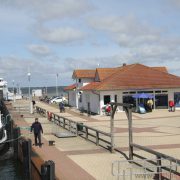
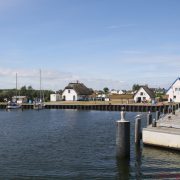
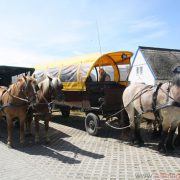

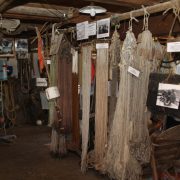
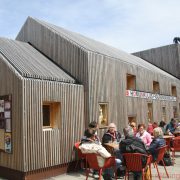
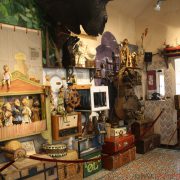

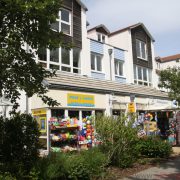
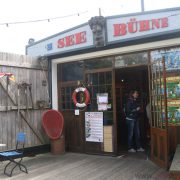
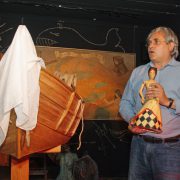
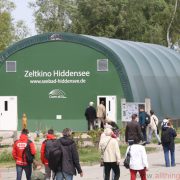
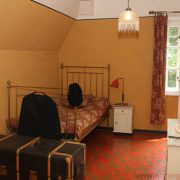
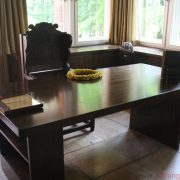
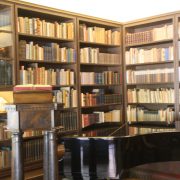
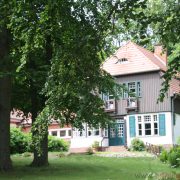
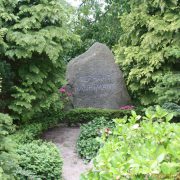
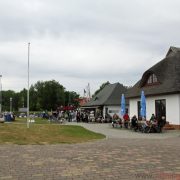
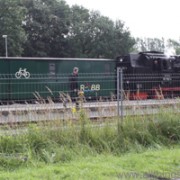
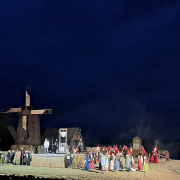



Speak Your Mind